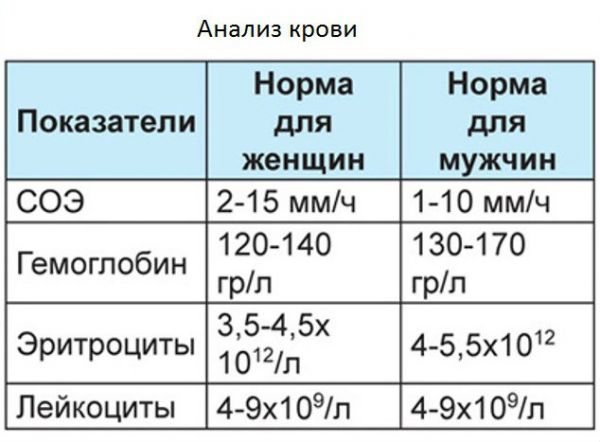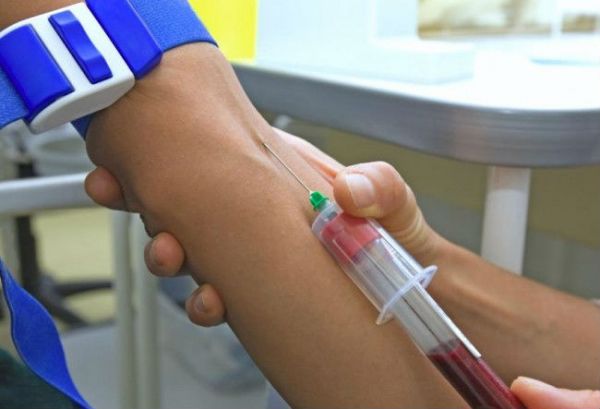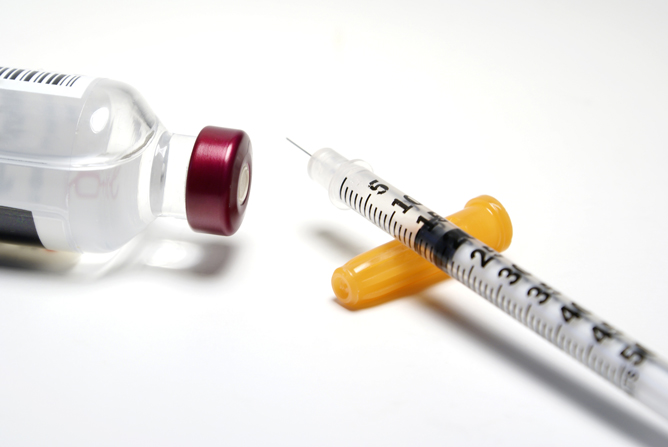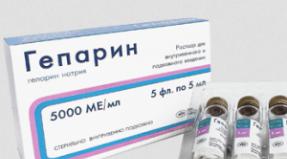Diabetes mellitus sugar indicators
Everyone knows that the sugar level in diabetes is the main indicator of the patient's condition. However, it is a misconception that only people who are sick need to check the amount of sugar (or glucose) in their blood. Healthy people are also advised to ensure that this indicator does not exceed the normal range.
If you have diabetes, how much sugar is acceptable in your blood? What should be done to keep the amount of glucose within the set limit? When to start worrying if you haven't been diagnosed yet?
Insulin is a hormonal compound produced by the pancreas whose main function is to control the amount of sugar that enters the cells. This hormone has great importance for the formation of proteins and amino acids in the body.
For healthy person are considered normal performance blood sugar from 3.5 to 6.1 mmol / l. After a meal, the glucose level increases slightly (up to 8 mmol / L), but quickly returns to its usual value, since the pancreas of a person who does not have diabetes responds in a timely manner to such an increase, synthesizing additional insulin, which transfers glucose into the cells, after which it occurs quick recovery blood sugar norms.
In diabetic patients, the pancreas does not produce enough insulin. For this reason, hyperglycemia occurs - a constant excess acceptable level glucose at.
It is characterized by the appearance of resistance of body tissues to the penetration of insulin.
Disruption of the pancreas has serious consequences. It is known that glucose - the most important source energy for the vital functions of cells internal organs... Without the timely transfer of this element to the tissue cells, the body cannot function normally. At the same time, only insulin is capable of delivering glucose to its intended purpose.
With diabetes mellitus, the blood sugar rate is greatly overestimated. For this reason, the blood begins to thicken and is getting worse and worse with the function of transporting oxygen and other nutrients throughout the body. Elevated level glucose in diabetes mellitus leads to a loss of elasticity of the walls of blood vessels, which can no longer accept the necessary nutrients. Due to excess glucose, disturbances in the functioning of the nerve membranes are also possible.
Symptoms of increased blood sugar
The following symptoms indicate that it is time to measure blood glucose values:
- a constant feeling of thirst and dry mouth;
- frequent urination;
- weakness and decreased performance;
- vision problems.
A recurring rise in blood sugar after a meal is one of the first signs of diabetes. At this stage, other symptoms appear:
- wounds do not heal for a long time and suppuration occurs;
- seizures appear on the lips;
- gums begin to bleed.
It can take several years before a person is diagnosed. According to statistics, 50% of patients are unaware of the presence of an ailment. For this reason, a huge number of patients come to see a doctor, already having serious complications.
This is why it is so important to keep track of what blood sugar is, even if diabetes has not yet been diagnosed. Critical level blood sugar (more than 7.8 mmol / l), persisting for a long time, causes irreversible changes in internal organs and tissues.
In advanced cases, complications can cause disability and even lead to death.
The norm and how to maintain it
To avoid the development of the described problems, you need to try to prevent the amount of glucose from going beyond the permissible limits:
- fasting blood sugar rate in diabetes - from 3.5 to 6.1 mmol / l;
- 2 hours after a meal - no more than 8 mmol / l;
- before bedtime - from 6.2 to 7.5 mmol / l.
If the listed indicators are observed, the risk of complications is significantly reduced. There are several other factors that need to be considered in order to completely rule it out. First of all, it is important to monitor the maintenance of normal weight for your gender, height and age. Need to control blood pressure and blood cholesterol. The optimal pressure for diabetics is considered to be no more than 130/80 mm Hg. Art. In the blood, the norm of cholesterol is no more than 4.5 mmol / l.
Proper nutrition and physical activity can help maintain proper blood glucose levels in diabetes. Replacing animal fats in the diet with vegetable ones, reducing carbohydrate consumption and avoiding sweets will bring benefits.
Is it possible to drink with diabetes alcoholic drinks? This is prohibited. Drinking strong alcohol stops the process of converting liver glycogen to glucose. At the same time, a sharply decreased blood sugar level in diabetes mellitus can provoke a hypoglycemic coma. Less strong drinks, such as sweet wines, are also prohibited.
Regular glucose control should become the responsibility of the sick person. A table in which the patient will write down indicators of the amount of sugar may be useful here. Thanks to such monitoring, it is possible to track how and depending on what the blood sugar level changes in diabetes, and to eliminate negative factors.

In diabetes, blood sugar levels can be maintained with prescription medications or insulin injections. In some cases, doctors recommend that patients drip Actovegin, Mexidol, Trental and other drugs that improve metabolic processes in organism.
Type 1 diabetes
Diabetes mellitus is the general name for a group of diseases endocrine system resulting from insufficient production of the hormone insulin in the body. The consequence of the disease is the violation of all types of metabolic processes: carbohydrate, fat, water-salt and mineral.
For development diabetes mellitus affects heredity. This hypothesis was first voiced in 1896. Subsequently, it was confirmed thanks to statistical observations. At the same time, type 1 diabetes is characterized by genetic heterogeneity, that is, several groups of genes affect the onset of the disease.
Nevertheless, it is impossible to predict the inheritance of the disease with a 100% probability to this day, since this mechanism is still not well understood.
Interestingly, what is not characteristic only of people. It can also be found in some representatives of the animal world, for example, in cats.
Type 1 diabetes is divided into autoimmune and idiopathic.
In the first case, an autoimmune process destructive to the cells of the pancreas or the insulin produced by them occurs in the body. This type of disease is characterized by the irreversibility of cell death, leading to an absolute deficiency of insulin in the body.
In the blood of autoimmune diabetes, specific antibodies appear. It is useful to know that these antibodies are formed several years before diabetes itself develops. This fact helps to determine if you are at risk and to take timely necessary measures including starting insulin injections to prevent pancreas from depleting.
Today, the following types of antibodies are determined in laboratories:
- ICA - to islet beta cells;
- IAA - anti-insulin antibodies;
- IA - 2 beta - to tyrosine phosphatase;
- GAD - to glutamate decarboxylase.
In idiopathic diabetes, antibodies are not formed in the blood. This type of disease is much more often caused by hereditary causes and is more typical for representatives of the countries of Asia and Africa.
Similar to the autoimmune type of diabetes mellitus is LADA diabetes, which most often develops in adult patients. It is diagnosed by the presence of the antibodies mentioned above in the blood and is treated with insulin injections.
Type 2 diabetes
In type 2 diabetes mellitus, as noted earlier, the amount of glucose in the blood exceeds the maximum allowable value due to the disappearance of the sensitivity of body tissues to insulin. Therefore, this type of disease is also called insulin-independent. Patients develop hyperinsulinemia, a condition in which the pancreas produces more insulin in order to utilize glucose.
This is not to say that blood sugar is more important for type 2 diabetes than for other types of the disease. But this indicator is associated with the second diabetes due to its greater prevalence.
Most often, patients diagnosed with type 2 diabetes are obese, which greatly aggravates the situation with the sensitivity of internal organs to insulin. This disease in most cases develops in old age, since at this time people have decreased physical activity and increased body weight.
Type 2 diabetes is more likely to be dependent on hereditary predisposition.
Other differences between the two types of disease can be found in the following table below.
Diabetes type 1 and 2
Specifications:
- Type 1
- Type 2
The influence of heredity on the appearance of the disease
- 10–20%
- 80–90%
Which gender is more common
- in men
- among women
What age is more typical
- up to 40 years old
- over 40 years old
- Overweight
- not typical
- present in 90% of cases
- Seasonal dependence
- spring, autumn and winter
Manifestation of symptoms at the onset of the disease
- is present
- the disease begins slowly, the diagnosis can be made several years after its onset
- The amount of insulin in the blood
- always low
- at the onset of the disease is normal
- Effect on blood vessels
- affects small vessels
- affects large vessels
Insulin resistance of body cells
- absent
- is present
- Insulin and beta cell antibodies
- present
- absent
- Therapy
- insulin injections
- diet, pills, insulin in advanced stages
Now you know that such an indicator as blood sugar in diabetes is really very important, and diabetes itself is a serious disease that cannot be treated irresponsibly. It is best to prevent the development of this ailment, observing the principles proper nutrition and not forgetting about physical activity.
If you are nevertheless given this diagnosis, you need to get used to regular monitoring of the state of the body.
Sugar intake in type 2 diabetes is a vital indicator. As already indicated above, a table with glucose values at different times of the day helps to track the dynamics of its change. In addition, it is necessary to strictly follow all the recommendations of the attending physician. Remember that no tasty food and other harmful products do not compare with the feeling of health and do not compensate for the unpleasant consequences of the disease.
Glucose is the main source of energy for the cells of the body. The blood always contains a strictly defined amount of it. The range of fluctuations in glucose levels is very narrow, and the hormone insulin is responsible for it. In diabetes mellitus, the processes of regulation of blood sugar are disrupted. Let's find out what blood sugar should be in type 2 diabetes, how to determine the norm and check it. Read your doctor's opinion, tips and advice.
The blood sugar level was determined in the last century. This was done on the basis of monitoring the state of healthy people and patients with diabetes.
So, in healthy people, sugar is constantly kept in the range from 3, 9 to 5 millimoles per liter until the morning meal. After eating, the permissible concentration in a healthy person is no more than 7, 8 millimoles per liter.
With prediabetes, fasting glucose values range from 5.5 to 6.1 millimoles (on an empty stomach). After eating (after two hours), the sugar level is not more than 11 mmol.
The diagnosis of type 2 diabetes is made when the fasting sugar level is 6, 1 mmol per liter after two independent studies. The same diagnosis is made if the norm was higher than 11.1 mmol per liter of blood regardless of food intake, as well as according to the results of a two-hour glucose resistance test.
So, if the amount of sugar is more than 6.1 mmol per liter on an empty stomach, this is already a signal when to start sounding the alarm. Indeed, with this indicator, destructive processes for the whole organism are triggered.
How to check your sugar level
Tests for the norm of blood sugar should be taken regularly and to everyone, regardless of gender and age, as well as health. After all increased rate may not give obvious symptoms for a very long time.
Usually, blood for analysis is taken from a finger on an empty stomach. Also known is the option of collecting from a vein. Then the test results will be slightly higher.
The laboratory method is the most accurate. It must be handed over to everyone with the appearance of such symptoms:
- weight loss;
- increased fatigue;
- dry mouth, intense thirst;
- signs of polyuria.
A prerequisite for the accuracy of the analysis is the time of the last meal - from 8 to 12 hours. Before the analysis, you should not worry, smoke, and also move a lot.
The glucose tolerance test is also a highly informative test for diabetes. First, the patient's blood is taken for analysis, and then he drinks a solution of 75 grams. glucose. Two hours later, the study is done again. The diagnosis is made if the sugar rate exceeds 11.1 mmol per liter of blood.
Doctor's opinion
Anna Pavlovna, diabetologist:
Careful monitoring of blood sugar levels is a real step in preventing diabetes and preventing the development of hyperglycemia. Hold stable normal sugar blood for patients with the second type of diabetes is quite real. In order to control the glucose rate, you must have a portable blood glucose meter at home. Keep a self-control diary: it will help you always keep your glucose normal. Each patient must strictly adhere to the daily regimen and diet.
For sugar tests to be normal and as accurate as possible, you need to:
- do not eat anything 8 hours before the analysis;
- it is forbidden to chew gum and brush your teeth;
- you should refuse to take medications, and if this is not possible, then notify the doctor;
- do not drink alcohol one day before the laboratory test.
Also, a bracelet made of Bianshi black jade can help to keep the sugar rate, it is actually capable of working miracles. Read on to find out if it will help you.
Significant deviations from the norm occur with epilepsy, diseases of the pituitary gland, thyroid gland, poisoning, liver diseases. All these factors must be taken into account when passing and decoding analyzes.
Diabetes mellitus is a complex disease that resists complete recovery... However, this does not mean that a person needs to come to terms with the diagnosis and not take any measures. Yes, it is completely impossible to cure diabetes, but it is quite possible to control it and prevent the development of complications against its background. And this requires regular blood tests, thanks to which every diabetic will be able to track:
- how his pancreas works and whether he has beta cells in his body that synthesize insulin, which is necessary for the processing of glucose in the blood;
- how effective is the treatment currently underway;
- whether complications develop and how severe they are.
In short, regular blood tests allow you to control the course of the disease and respond in a timely manner to emerging health problems, thereby regaining the chance to lead a normal life.
What tests do I need to take?
- blood glucose;
- glycated hemoglobin;
- fructosamine;
- complete blood count (CBC);
- blood chemistry;
- general urine analysis (OAM);
- determination of microalbumin in urine.
In parallel with this, it is required to periodically undergo full diagnostics, which includes:
- ultrasound examination of the kidneys;
- ophthalmological examination;
- Doppler ultrasonography of the veins and arteries of the lower extremities.
These studies help to reveal not only latent diabetes mellitus, but also the development of its characteristic complications, for example, varicose veins veins, decreased frequency of vision, renal failure etc.
Blood glucose
This blood test for diabetes mellitus is very important. Thanks to it, you can monitor blood glucose levels and the work of the pancreas. This analysis is carried out in 2 stages. The first is on an empty stomach. It allows you to identify the development of such a syndrome as "morning dawn", which is characterized by a sharp increase in the concentration of glucose in the blood around 4-7 o'clock in the morning.
But in order to get more reliable results, the second stage of the analysis is carried out - the blood is donated again after 2 hours. The indicators of this study allow you to monitor the absorption of food by the body and the processes of glucose breakdown.
Diabetics need to carry out these blood tests every day. To do this, you do not need to run to the clinic every morning. It is enough just to purchase a special glucometer that will allow you to carry out these tests without leaving your home.
Glycated hemoglobin
The short name is HbA1c. This analysis is carried out in laboratory conditions and is submitted 2 times a year, provided that the patient does not receive insulin, and 4 times a year when undergoing treatment with insulin injections.
Important! Analysis for determination glycated hemoglobin does not allow obtaining information about how actively the processes of increasing and decreasing blood sugar are taking place. It is only able to show the average glucose level for the last 3 months. Therefore, it is so important to independently monitor these indicators on a daily basis using a glucometer.
As biological material for this study, venous blood is taken. The results that he shows, diabetics should be sure to write down in their diary.
Fructosamine
For type 1 or type 2 diabetes, it is recommended to take this test every 3 weeks. Its correct decoding allows you to track the effectiveness of the treatment and the development of complications against the background of diabetes mellitus. An analysis is carried out in laboratory conditions and blood is taken from a vein on an empty stomach for research.

When deciphering this analysis, it is possible to identify abnormalities in the body that have resulted in diabetes mellitus. So, for example, if a patient has an elevated level of fructosamine in the blood serum, this may indicate that the diabetic has kidney problems or hyperactivity. thyroid gland... If this indicator is below normal, then this already indicates an insufficient functioning of the thyroid gland and a disturbed hormonal background, as well as the development of diabetic nephropathy.
Important! If a diabetic in the course of this study revealed significant deviations from the norm, then a additional diagnostics for the identification of pathologies and the appointment of appropriate treatment.
UAC
A general blood test allows you to investigate the quantitative indicators of blood constituents, due to which it is possible to identify various pathological processes currently taking place in the body. For research, blood is taken from a finger. In type 1 or type 2 diabetes, biological material is taken on an empty stomach or immediately after a meal.
With the help of the UAC, you can monitor the following indicators:
- Hemoglobin. When this indicator is below normal, then this may indicate the development iron deficiency anemia, opening internal bleeding and about the general violation of the process of hematopoiesis. A significant excess of hemoglobin in diabetes mellitus indicates a lack of fluid in the body and its dehydration.
- Platelets. These are red cells that perform one important function - they are responsible for the level of blood clotting. If their concentration decreases, the blood begins to coagulate poorly, which increases the risk of bleeding opening, even with minor injury. If the level of platelets exceeds the normal range, then this already speaks of increased blood clotting and may indicate the development of inflammatory processes in the body. Sometimes an increase in this indicator is a sign of tuberculosis.
- Leukocytes. They are health guards. Their main function is the detection and elimination of foreign microorganisms. If, according to the results of the analysis, their excess is observed, then this indicates the development of inflammatory or infectious processes in the body, and can also signal the development of leukemia. Reduced level leukocytes, as a rule, is observed after radiation exposure and indicates a decrease in the body's defenses, which makes a person vulnerable to various infections.
- Hematocrit. Many people often confuse this indicator with the level of red blood cells, but in fact it shows the ratio of plasma to red cells in the blood. If the level of hematocrit rises, then this indicates the development of erythrocytosis, if it decreases, about anemia or overhydration.

Standards for men and women
Blood chemistry
Biochemical diagnostics can reveal even the hiding processes taking place in the body. For the study, venous blood is taken on an empty stomach.
A biochemical blood test allows you to track the following indicators:
- Glucose level. When researching venous blood blood sugar should not exceed 6.1 mmol / l. If this indicator exceeds these values, then we can talk about impaired glucose tolerance.
- Glycated hemoglobin... The level of this indicator can be found not only by passing HbA1c, but also with the help of this analysis. Biochemical indicators make it possible to determine the further treatment tactics. If the level of glycated hemoglobin exceeds 8%, then the treatment is corrected. For people suffering from diabetes, the level of glycated hemoglobin below 7.0% is considered the norm.
- Cholesterol. Its concentration in the blood allows you to determine the condition fat metabolism in organism. Elevated cholesterol levels increase the risk of developing thrombophlebitis or thrombosis.
- Triglycides. An increase in this indicator is most often observed with the development of insulin-dependent diabetes mellitus, as well as with obesity and concomitant T2DM.
- Lipoproteins. In type 1 diabetes, these values often remain normal. Only minor deviations from the norm can be observed, which is not hazardous to health. But in type 2 diabetes, the following picture is observed - low-density lipoproteins are increased, and high-density lipoproteins are underestimated. In this case, an urgent correction of the treatment is required. Otherwise, serious health problems may appear.
- Insulin. Its level allows you to monitor the amount of your own hormone in the blood. In type 1 diabetes, this indicator is always below normal, and in type 2 diabetes, it remains within the normal range or slightly exceeds it.
- C-peptide. A very important indicator that allows you to assess the functionality of the pancreas. With diabetes 1, this indicator is also at the lower limits of the norm or is equal to zero. With type 2 diabetes, the level of C-peptides in the blood is usually normal.
- Pancreatic peptide... In diabetes mellitus, it is often underestimated. Its main function is to control the production of juice by the pancreas to break down food.

A biochemical blood test for diabetes must be taken at least 1 time in 6 months
OAM
To obtain a more accurate assessment of the health status of a diabetic, it is necessary to take a blood and urine test at the same time. OAM is given once every 6 months and, as a UAC, allows you to reveal various hidden processes in the body.
This analysis allows you to evaluate:
- the physical properties of urine, its acidity, the level of transparency, the presence of sediment, etc .;
- chemical properties of urine;
- the specific gravity of urine, thanks to which it is possible to determine the state of the kidneys;
- protein, glucose and ketone levels.
Any deviations from the norm in diabetes mellitus require additional examination of the patient. And often for this purpose, an analysis is also taken to determine the microalbuminaria.
Determination of microalbumin in urine
This analysis allows you to identify pathological processes in the kidneys at early development. He surrenders like this: in the morning a person empties bladder, as usual, and 3 subsequent portions of urine are collected in a special container.
If the functionality of the kidneys is normal, microalbumin is not detected in the urine at all. If there is already any renal impairment, its level rises significantly. And if it is in the range of 3–300 mg / day, then this indicates serious disorders in the body and the need for urgent treatment.
It is necessary to understand that diabetes mellitus is a disease that can disable the entire body as a whole and it is very important to monitor its course. Therefore, one should not neglect the delivery of laboratory tests. This is the only way to keep this disease under control.
A significant indicator that allows you to diagnose abnormalities in carbohydrate metabolism is glucose; in diabetes mellitus, as a result of its surges, various negative consequences are possible. Excessive indicators provoke dehydration of tissue cells. As a result, the fluid is flushed out of the body in the urine.
- In some cases, enuresis is possible as a result of off-scale glucose readings.
- Sensitivity is impaired.
- Excessive glucose is harmful to blood vessels.
- The functionality and integrity of cellular tissues is impaired.
- Circulatory problems - poor blood flow to the brain cells. The same goes for the muscular system.
It is very important for diabetics to control their glucose levels every day. To do this, use test strips or blood glucose meters. In order to choose the ideal control option, you should consult an endocrinologist.
Hypo- and hyperglycemia
Glucose can increase with diabetes, and a drop in its indicators is also possible. Both conditions are dangerous. With excessive glucose levels, hyperglycemia is observed. The patient becomes too agitated, a feeling of fear appears.
With excessive jumps in blood sugar, metabolic disorders are observed. In addition, toxins are released, which leads to poisoning of the body. Light form hyperglycemia is not dangerous to health, but negative symptoms are observed:
- constant feeling of thirst;
- the skin becomes dry, as a result, microcracks are possible;
- arise frequent urge to urinate.

In severe form, hyperglycemia is accompanied by the following symptoms:
- there is nausea, vomiting;
- constantly want to sleep;
- the diabetic is in a retarded state.
Even loss of consciousness is possible, as well as more dangerous consequences- hyperglycemic coma and even death.
With an increase in the hyperfunction of the thyroid gland, the blood glucose level increases sharply. Sometimes sweet sickness develops as a result of liver disease. If hyperglycemia lasts a long time, the diabetic weakens, immunity decreases, appears and progresses inflammatory processes... In addition, the functioning of the genitals is disrupted. The same applies to tissue circulation. Indicators for hyperglycemia are more than five and a half mmol / l. The analysis should be taken on an empty stomach.
Hypoglycemia is possible in cases where there is an overstrain of the insulin apparatus in such an important organ as the pancreas. A sharp drop in blood glucose levels is possible due to an overdose of insulin. This leads to the fact that, as a result, insulin comes in a large volume, the tissues absorb glucose and hypoglycemia develops.
Indicators for hypoglycemia are below 3.3 mmol / l. A similar ailment is possible due to the presence of a serious pathology in the pancreas. A decrease in blood glucose can be observed against the background of the presence of renal ailments, serious pathologies in the hypothalamus and adrenal glands.
For diabetes mellitus, an increase in sweating is characteristic of a low blood glucose level. In addition, the diabetic weakens sharply, tremors of the limbs and the whole body appear. Coma is possible. It is important that the diabetic always has something sweet on hand. If you feel bad, you should eat a candy or a piece of chocolate.
Fighting a Drop in Diabetic Blood Glucose

With a decrease in blood glucose, 120 grams of unsweetened fruit juice will help to normalize indicators in a mild form of hypoglycemia. As for more serious symptoms, in this case, you need to quickly take from fifteen to twenty grams of a simple carbohydrate and later - as much complex one, for example, it can be a piece of bread or dry thin biscuits.
What to do with hyperglycemia
With increased rates, an additional dose of insulin should be administered. It will also help to reduce the indicators of hypoglycemic drugs in tablet form.
Morning dawn syndrome
When the sun rises, it is possible for the dawn to appear in diabetes - a condition in which glucose levels rise between four in the morning and six in the morning. Sometimes an increase in sugar is observed until nine o'clock in the morning. A similar condition is most often found in sweet insulin-dependent illness.

Of the reasons why the phenomenon of morning dawn is observed, the following should be highlighted:
- the day before the diabetic experienced stress;
- dense food before bedtime;
- in the evening, before going to bed, insulin was injected in the wrong, insufficient dosage.
- type 1 diabetics should increase the dosage of insulin for evening administration;
- injecting long-acting insulin later than usual;
- introduce in the morning short insulin to prevent hyperglycemia.
It is very important to control the medication intake, the doctor, if necessary, adjusts the methods of treating the disease.
Somoji syndrome
A similar condition occurs when a diabetic has injected insulin in excessive doses. This condition is possible with type 1 sweet disease. Ricochet hyperglycemia has the following symptoms:
- there are jumps in glucose;
- hypoglycemia;
- ketone bodies appear - in the blood and in the urine;
- constantly hungry;
- body weight increases.
In the process of combating the phenomenon of Somoji, it is necessary to measure the sugar level regularly - at regular intervals. This should be done even at night. The doctor selects the dosage of insulin in each case strictly individually. The introduction of insulin, glucose control - together all this will help to achieve maximum results in the fight against the disease. Diabetes is not a death sentence. You can live with him for a long time. The main thing is to control sugar and follow the doctor's recommendations.
For the prevention and treatment of diabetes, doctors recommend DiabeNot Capsules for diabetes. This unique natural remedy is the latest development of modern science. Comprises natural ingredients and is not addictive. Find out the opinion of doctors ...



















